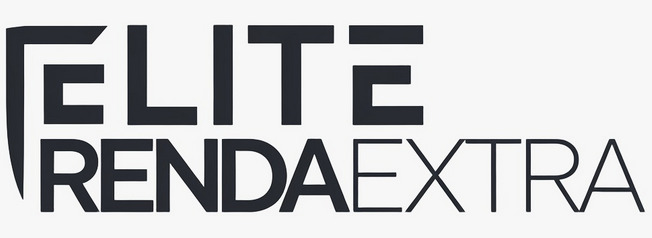Navigating the world of personal finance can sometimes feel overwhelming, especially when you need access to funds for a major purchase, debt consolidation, or an unexpected expense. A personal loan can be a powerful financial tool, offering a structured way to borrow with fixed interest rates and predictable monthly payments.
This guide is designed to demystify the process for you. We’ll walk you through every stage, from preparing your finances to submitting your application and understanding the terms. By the end, you’ll have a clear, step-by-step roadmap to confidently apply for a personal loan in Canada.
Before You Apply: Key Steps to Prepare
Jumping straight into applications without preparation can lead to rejections or unfavorable terms. Taking a few preparatory steps first will significantly increase your chances of success and help you secure a better interest rate. Think of it as doing your homework before the big test.
Check Your Credit Score
Your credit score is one of the most critical factors lenders consider. It’s a numerical representation of your creditworthiness, and a higher score generally translates to lower interest rates. In Canada, you can get your credit report and score for free from the two main credit bureaus: Equifax and TransUnion. Review your report for any errors and aim for a score of 660 or higher to be considered a good candidate by most mainstream lenders.
Determine How Much You Need to Borrow
It’s crucial to have a precise number in mind. Are you consolidating $15,000 in credit card debt? Do you need $10,000 for a home renovation? Borrowing too little might not solve your problem, while borrowing too much means you’ll pay unnecessary interest. Create a detailed budget for your project or expense to arrive at a realistic loan amount.
Calculate Your Debt-to-Income (DTI) Ratio
Your DTI ratio compares your total monthly debt payments to your gross monthly income. Lenders use it to assess your ability to manage new monthly payments. To calculate it, add up all your monthly debt obligations (rent/mortgage, car payments, credit card minimums, student loans) and divide that total by your gross monthly income. Most lenders in Canada prefer a DTI ratio below 40-43%.
The Step-by-Step Guide to Applying for a Personal Loan in Canada
Once your finances are in order, you’re ready to start the application process. Following these steps methodically will help you stay organized and find the best possible loan for your needs.
Step 1: Compare Lenders and Loan Types
Not all lenders are the same. The three main sources for personal loans in Canada are traditional banks, credit unions, and online lenders. Each has its own set of pros and cons, interest rates, and qualification criteria.
| Lender Type | Pros | Cons |
|---|---|---|
| Traditional Banks (e.g., RBC, TD, Scotiabank) | Established relationship, potential for preferred rates, in-person service. | Stricter eligibility criteria, slower approval process. |
| Credit Unions (e.g., Vancity, Meridian) | Often more flexible, member-focused, competitive rates. | May require membership, smaller branch network. |
| Online Lenders (Fintech companies) | Fast application and funding, often cater to a wider range of credit scores. | Can have higher interest rates, entirely digital experience. |
Step 2: Gather Your Required Documents
To speed up the process, have your documentation ready. While requirements vary slightly between lenders, you’ll generally need the following:
- Proof of Identity: A valid government-issued photo ID (e.g., driver’s license, passport).
- Proof of Address: A recent utility bill or bank statement with your name and address.
- Proof of Income: Recent pay stubs, T4 slips, or a letter of employment. If you’re self-employed, you may need Notices of Assessment from the CRA for the last two years.
- Bank Account Information: For depositing the funds and setting up automatic payments. A void cheque or pre-authorized debit form is usually sufficient.
- Details of Existing Debts: A list of your current debts, including balances and monthly payments.
Step 3: Get Pre-Qualified
Many lenders, especially online ones, offer a pre-qualification process. This involves providing some basic financial information to see what loan amount, term, and interest rate you might be eligible for. The best part? It typically results in a “soft credit check,” which does not affect your credit score. Pre-qualifying with several lenders is a smart way to shop around for the best offer without any commitment or negative impact.
Step 4: Submit Your Formal Application
Once you’ve chosen a lender and a loan offer that suits you, it’s time to submit the formal application. This is where you’ll provide all the documents you gathered in Step 2. Be thorough and double-check all information for accuracy to avoid delays. The lender will perform a “hard credit check” at this stage, which will be recorded on your credit report.
Step 5: Review the Loan Agreement and Sign
If your application is approved, the lender will send you a loan agreement. This is a legally binding contract, so read it carefully. Pay close attention to:
- The Interest Rate (APR): Ensure it matches the rate you were offered.
- The Loan Term: The length of time you have to repay the loan.
- The Monthly Payment: Confirm you can comfortably afford this amount.
- Fees: Look for any origination fees, prepayment penalties, or late payment fees.
If you agree with all the terms, you can sign the agreement digitally or in person.
What Happens After You’re Approved?
After you sign the agreement, the lender will disburse the funds, usually via direct deposit into your chequing account. This can happen as quickly as the same day with some online lenders or may take a few business days with traditional banks. Your first payment will typically be due about a month later. It’s wise to set up automatic payments to ensure you never miss a due date, which is crucial for maintaining a good credit history.
A personal loan is a significant financial commitment. By preparing properly, comparing your options, and understanding the terms, you can make it a positive step toward achieving your financial goals. For more detailed information from a trusted source, you can review the guide on how to apply for a personal loan in Canada provided by the Financial Consumer Agency of Canada.

